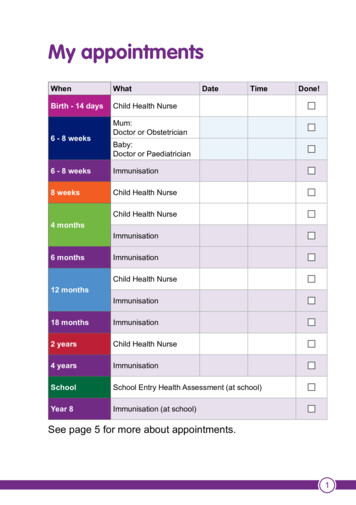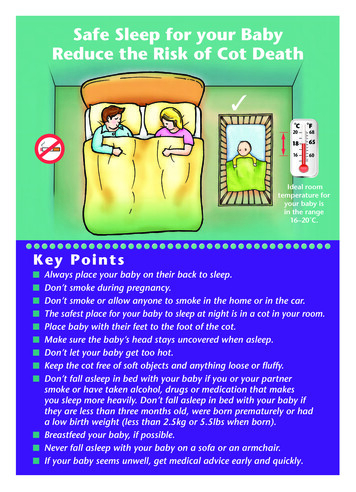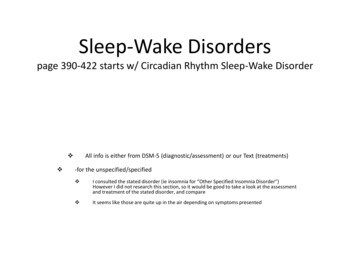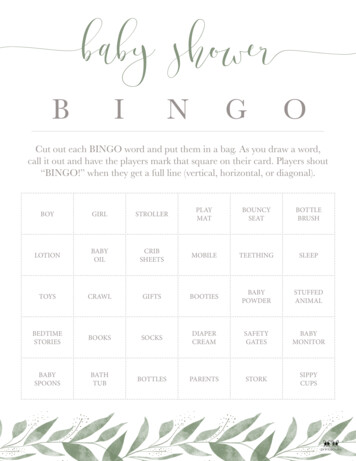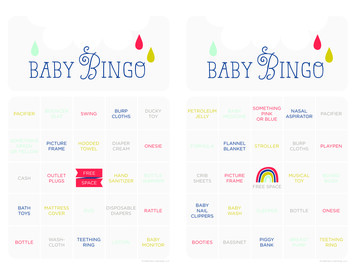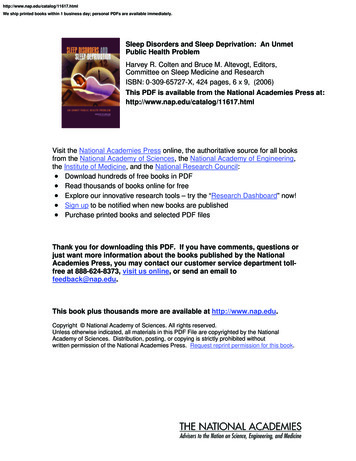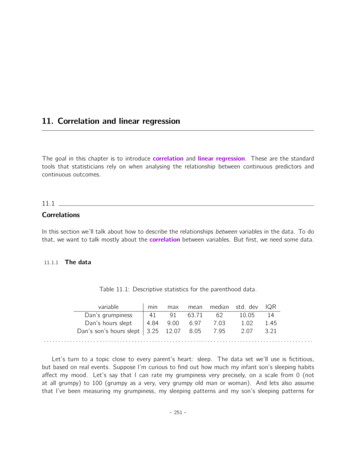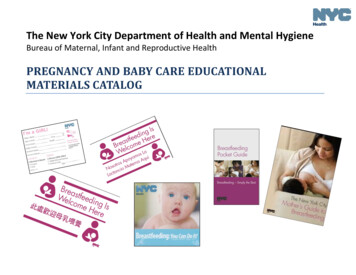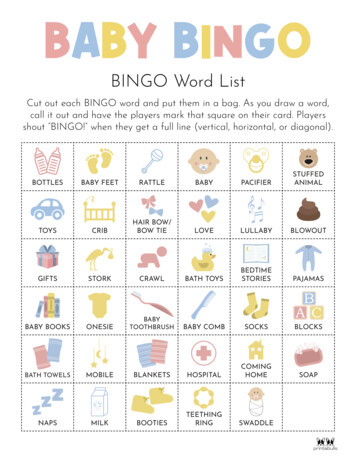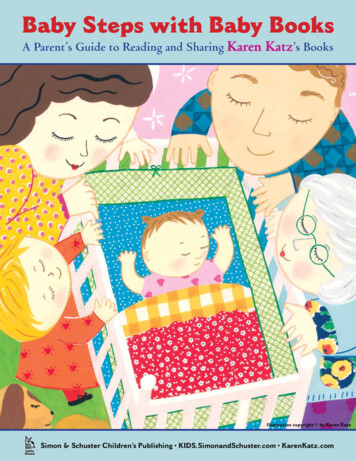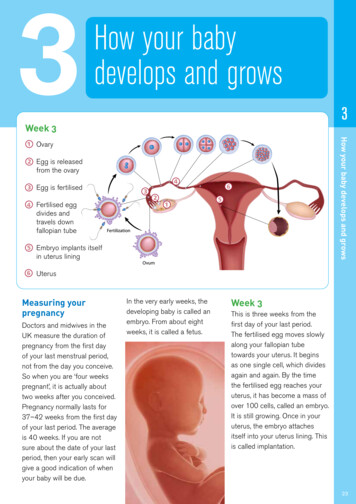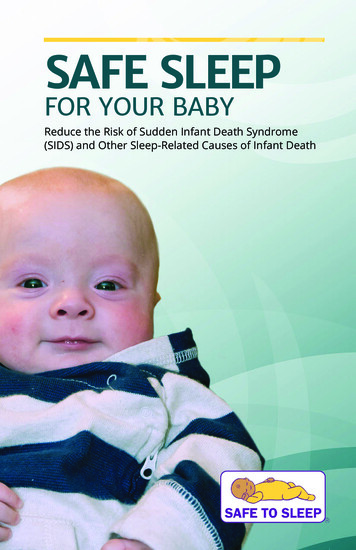
Transcription
SAFE SLEEPFOR YOUR BABYReduce the Risk of Sudden Infant Death Syndrome(SIDS) and Other Sleep-Related Causes of Infant Death
This is what a safe sleep environmentlooks like. The infant’s sleep area hasno bumpers, pillows, blankets, ortoys and is in the same room wherethe parents sleep.1
Each year in the United States, thousands of babies die suddenlyand unexpectedly. Some of these deaths result from unknowncauses, such as Sudden Infant Death Syndrome (SIDS), while othersare from known causes, including other sleep-related causes ofinfant death.What is SIDS?SIDS is the sudden, unexpected death—that doesn’t have a knowncause even after a full investigation—of a baby between 1 monthand 1 year of age.About half of the sudden, unexpected infant deaths that occur inthe United States each year are from SIDS.What are other sleep-relatedcauses of infant death?Other sleep-related causes of infant death are those relatedto how or where a baby slept. These can include accidental:lllSuffocation: when something, such as a pillow, or someonecovers the baby’s face and nose, blocking the ability to breatheEntrapment: when the baby gets trapped between two objects,such as a mattress and a wall, and can’t breatheStrangulation: when something presses on or wraps aroundthe baby’s neck, blocking baby’s airwayFast facts about SIDSllSIDS is the leading cause of death among babies1 month to 1 year of age.Most SIDS deaths happen when babies are between1 month and 4 months of age.2
What should parents andcaregivers know about SIDSand other sleep-relatedcauses of infant death?We have made great progressin reducing SIDS.Since the 1990s, when the U.S. back-sleeping recommendationswere first released and public awareness efforts began, the overallU.S. SIDS rate has dropped by about 50 percent. This lower rateequals thousands of babies’ lives. Since then, the number of babiesplaced on their backs to sleep has tripled.But, as SIDS rates have declined, deaths from other sleeprelated causes, such as suffocation, have increased, andcertain groups remain at higher risk for SIDS than others. Forexample, African American and American Indian/Alaska Nativebabies are at higher risk for SIDS than white, Hispanic, or Asian/Pacific Islander babies. So there is still work to do to save infant lives.3
Babies sleep safest on their backs.Babies who sleep on their backs are much lesslikely to die of SIDS than babies who sleep on theirstomachs or sides.Every sleep time counts.Babies should sleep on their backs for naps andat night. Babies who are used to sleeping on theirbacks but who are then placed on their stomachs,like for a nap, are at very high risk for SIDS.Sleep surface and sleepenvironment matter.Babies who sleep on a soft surface, such as an adultmattress, or under a soft covering, such as a softblanket or quilt, are more likely to die of SIDS orsuffocation. These deaths also are more likely whensoft objects, toys, and blankets are in the baby’ssleep area.4
What can I do to lower mybaby’s risk of SIDS and othersleep-related causes of death?There is no sure way to prevent SIDS, but parents and caregiverscan take steps to reduce the risk of SIDS and other sleep-relatedcauses of infant death:Always place baby on his or herback to sleep, for naps and at night,to reduce the risk of SIDS.The back sleep position is the safest position for all babies until theyare 1 year old. Preemies (infants born preterm) should be placed ontheir backs to sleep as soon as possibleafter birth. Babies who are used tosleeping on their backs, but whoare then placed to sleep ontheir stomachs, like for a nap,are at very high risk for SIDS.If baby rolls over on his or her own during sleepfrom back to stomach or stomach to back, there isno need to reposition the baby. Starting sleep onthe back is most important for reducing SIDS risk.5
Use a firm and flat sleep surface, suchas a mattress in a safety-approved crib*,covered by a fitted sheet with no otherbedding or soft items in the sleep area.Never place baby to sleep on soft surfaces, such as on a couch,sofa, waterbed, pillow, quilt, sheepskin, or blanket. These surfacescan be very dangerous for babies. Do not use a car seat, stroller,swing, infant carrier, infant sling, or similar products as baby’sregular sleep area. Following these recommendations reduces therisk of SIDS and death or injury from suffocation, entrapment,and strangulation.* A crib, bassinet, portable crib, or play yard that follows the safety standardsof the Consumer Product Safety Commission (CPSC) is recommended.For information on crib safety, contact the CPSC at 1-800-638-2772 orhttp://www.cpsc.gov.6
Breastfeed your baby toreduce the risk of SIDS.Breastfeeding has many health benefits formother and baby. Babies who breastfeed, orare fed breastmilk, are at lower risk for SIDSthan babies who were never fed breastmilk.The longer a baby is exclusively breastfed orfed breastmilk, the lower the risk.If you bring baby into your bed for feeding, puthim or her back in a separate sleep area whenfinished. This sleep area should be made forinfants, like a crib or bassinet, and close toyour bed. If you fall asleep while feeding orcomforting baby in an adult bed, place him orher back in a separate sleep area as soon asyou wake up. Evidence shows that the longera parent and an infant bed-share, the higherthe risk for sleep-related causes of infantdeath, such as suffocation. Breastfeedinginformation is available at http://www.cdc.gov/breastfeeding/faq/index.htm.7
Room sharing reduces the risk for SIDS.Share your room with baby. Keep babyin your room close to your bed, but ona separate surface designed for infants,ideally for baby’s first year, but at leastfor the first 6 months.Room sharing reduces the risk of SIDS. Baby should not sleep in anadult bed, on a couch, or on a chair alone, with you, or with anyoneelse, including siblings or pets. Having a separate safe sleep surfacefor the baby reduces the risk of SIDS and the chance of suffocation,strangulation, and entrapment.If you bring your baby into your bed for feeding or comforting,remove all soft items and bedding from the area. When finished, putbaby back in a separate sleep area made for infants, like a crib orbassinet, and close to your bed.Couches and armchairs can also be very dangerous for babies, ifadults fall asleep as they feed, comfort, or bond with baby while onthese surfaces. Parents and other caregivers should be mindful ofhow tired they are during these times. There is no evidence for oragainst devices or products that claim to make bed sharing “safer.”8
Do not put soft objects, toys,crib bumpers, or loose beddingunder baby, over baby, or anywherein baby’s sleep area.Keeping these items out of baby’s sleep area reduces the risk ofSIDS and suffocation, entrapment, and strangulation. Becauseevidence does not support using them to prevent injury, cribbumpers are not recommended. Crib bumpers are linked toserious injuries and deaths from suffocation, entrapment, andstrangulation. Keeping these and other soft objects out of baby’ssleep area is the best way to avoid these dangers.9
Do not smoke during pregnancy,and do not smoke or allowsmoking around your baby or inyour baby’s environment.To reduce the risk of SIDS,women should:Get regular prenatal careduring pregnancy.Avoid smoking, drinkingalcohol, and usingmarijuana and illegal drugsduring pregnancy and afterthe baby is born.10
Think about giving your babya pacifier for naps and nighttimesleep to reduce the risk of SIDS.Do not attach the pacifier to anything—like a string, clothing,stuffed toy, or blanket—that carries a risk for suffocation, choking,or strangulation.Wait until breastfeeding is well established (often by 3 to 4 weeks)before offering a pacifier. Or, if you are not breastfeeding, offerthe pacifier as soon as you want. Don’t force the baby to use it.If the pacifier falls out of baby’s mouth during sleep, there is noneed to put the pacifier back in. Pacifiers reduce the risk of SIDSfor all babies, including breastfed babies.11
Do not let your baby get too hotduring sleep.Dress your baby in sleep clothing, such as a wearable blanket,designed to keep him or her warm without the need for looseblankets in the sleep area. Dress baby appropriately for theenvironment, and do not overbundle. Parents and caregiversshould watch for signs of overheating, such as sweating or thebaby’s chest feeling hot to the touch. Keep the baby’s face andhead uncovered during sleep.Research links increased SIDS risk withtoo many layers of clothing or blankets,and with higher room temperature.12
Follow guidance from your healthcare provider on your baby’s vaccinesand regular health checkups.Vaccines not only protect baby’s health, but research showsthat vaccinated babies are at lower risk for SIDS.13
Avoid products that go against safesleep recommendations, especiallythose that claim to prevent or reducethe risk for SIDS.Evidence does not support the safety or effectiveness of wedges,positioners, or other products that claim to keep infants in a specificposition or to reduce the risk of SIDS, suffocation, or reflux. Infact, many of these products are associated with injury and death,especially when used in baby’s sleep area.Do not use heart or breathingmonitors in the home to reducethe risk of SIDS.Some health care providers recommend these monitors forconditions not related to SIDS or SIDS risk. If you have questionsabout using these monitors for other health conditions, talk withyour baby’s health care provider, and always follow safesleep recommendations.14
Give your baby plenty of tummytime when he or she is awake andsomeone is watching.Supervised tummy time helps strengthen your baby’s neck,shoulder, and arm muscles. It also helps to prevent flat spots on theback of your baby’s head. Limiting the time spent in car seats, oncethe baby is out of the car, and changing the direction the infant laysin the sleep area from week to week also can help to prevent theseflat spots.15
Answers to commonquestions about SIDSand other sleep-relatedcauses of infant deathQ: What is the best wayto reduce baby’s riskfor SIDS?A: The best way to reducethe risk for SIDS is to alwaysplace baby on his or herback to sleep in a separatesleep area, designed for ababy, with no soft objects,toys, or loose bedding.Q: Will my baby chokeif placed on the backto sleep?A: No. Healthy babiesnaturally swallow or coughup fluids—it’s a reflex allpeople have. Babies mayactually clear such fluidsbetter when sleeping ontheir backs because of thelocation of the opening tothe lungs in relation to theopening to the stomach.There has been no increasein choking or similarproblems for babies whosleep on their backs.16
Q: When I was a baby, I was put on my stomach to sleep. Wasthat wrong?A: No. Caregivers were following advice based on the evidenceavailable at that time. Since then, research has shown thatsleeping on the stomach increases the risk for SIDS. Thisresearch also shows that sleeping on the back carries the lowestrisk of SIDS, and that’s why the recommendation is “back is best.”Q: Can I swaddle my baby to reduce the risk of SIDS?A: There is no evidence that swaddling reduces SIDS risk. In fact,swaddling can increase the risk of SIDS and other sleep-relatedcauses of infant death if swaddled babies are placed on theirstomachs for sleep or roll onto their stomachs during sleep. Ifyou decide to swaddle your baby, always place baby fully on hisor her back to sleep. Stop swaddling baby once he or she startstrying to roll over.Q: Can I practice skin-to-skin care as soon as my babyis born?A: Experts recommend skin-to-skin care for all moms andnewborns for at least an hour after birth, once the mom isstable, awake, and able to respond to her baby. When momneeds to sleep or handle other things, babies should be placedon their backs in a bassinet.Q: What if I fall asleep while feeding my baby?A: Any time you fall asleep while holding or feeding your baby, heor she is at risk for SIDS, suffocation, or sleep-related causes ofdeath or injury. Couches and armchairs can be very dangerousfor babies when shared with an adult who then falls asleep.Research shows that adult beds are also dangerous in thesesituations but are less risky than a couch or armchair. Beforeyou start feeding your baby, think about how tired you are. Ifthere’s even a slight chance you might fall asleep, avoid couchesor armchairs and remove all soft items and bedding from anadult bed before you start the feeding to reduce the risk of SIDS,suffocation, or other sleep-related causes of death. If you fallasleep while feeding or comforting your baby on any surface,place him or her in a separate sleep area as soon as you wake.17
Spread the word!Make sure everyone who cares for your baby knowsthe ways to reduce the risk of SIDS and sleep-relatedinfant deaths.Talk with your health care provider about any questionsor challenges related to safe sleep practices for your baby.Help family members, siblings, grandparents, babysitters,day care workers—EVERYONE—reduce your baby’s risk.Share these safe sleep messages with those who care foryour baby or for any baby younger than 1 year of age.Remember:Babies sleep safest on their backs for naps and at night!18
For more information, contactthe Safe to Sleep campaign:Phone: 1-800-505-CRIB (2742)Email: SafetoSleep@mail.nih.govFax: 1-866-760-5947Web: http://safetosleep.nichd.nih.govSafe to Sleep campaign collaborators include:Eunice Kennedy Shriver National Institute of Child Health andHuman Development, National Institutes of HealthMaternal and Child Health Bureau of the Health Resourcesand Services AdministrationCenters for Disease Control and Prevention, Divisionof Reproductive HealthConsumer Product Safety CommissionAmerican Academy of PediatricsAmerican College of Obstetricians and GynecologistsFirst CandleNIH Pub No 17-HD-7040January 2019Safe to Sleep is a registered trademark of the U.S. Department of Health and Human Services.
Share your room with baby. Keep baby in your room close to your bed, but on a separate surface designed for infants, ideally for baby's first year, but at least for the first 6 months. Room sharing reduces the risk of SIDS. Baby should not sleep in an . adult bed, on a couch, or on a chair alone, with you, or with anyone
